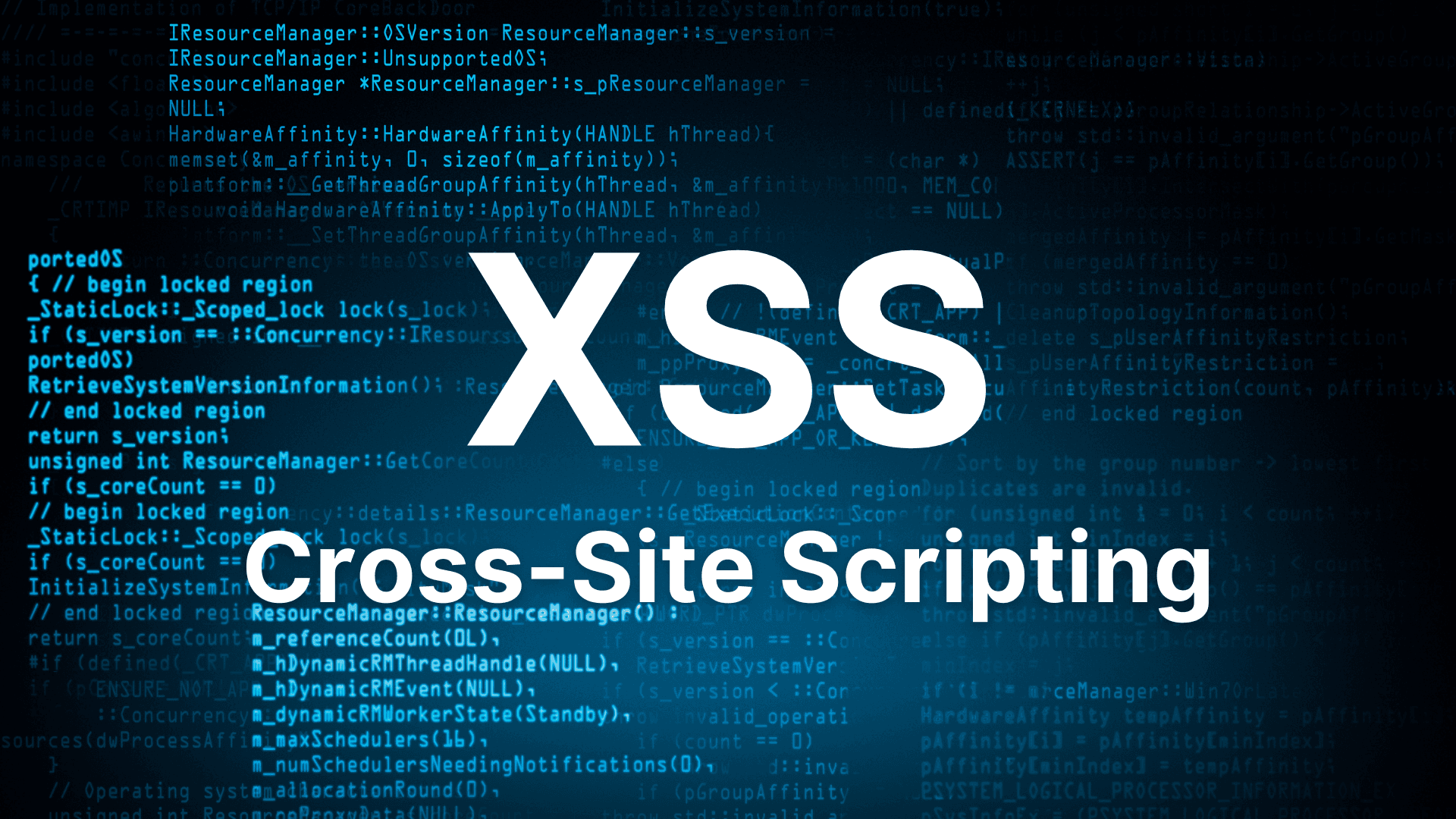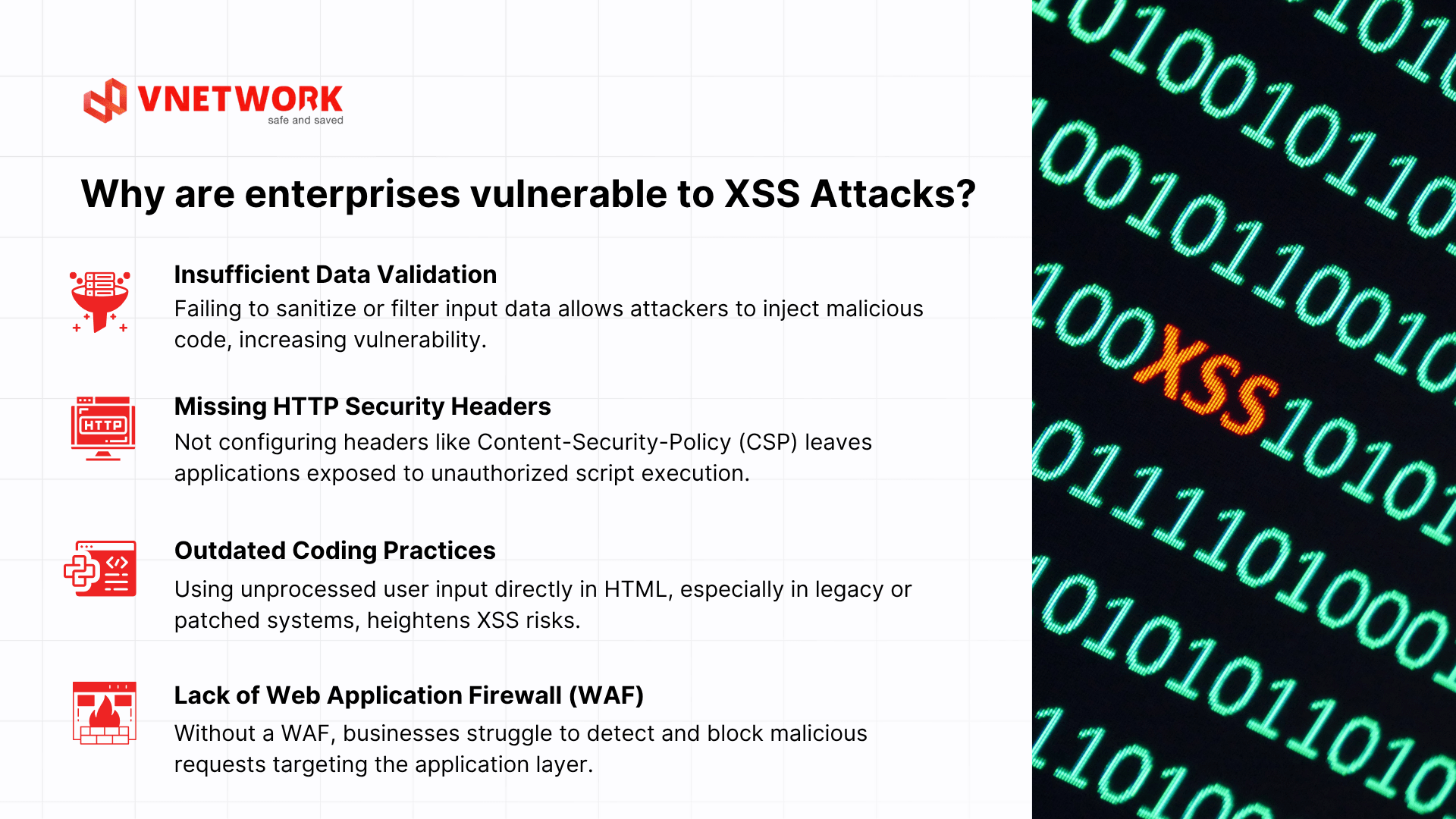1. What is XSS?
Cross-Site Scripting (XSS) is a type of cyberattack where attackers inject malicious code, typically JavaScript, into legitimate websites. When users visit the affected page, their browser executes the malicious code, enabling attackers to steal cookies, authentication tokens, login credentials, or perform unauthorized actions on behalf of the victim.
Unlike direct server attacks such as SQL Injection or DDoS, XSS exploits vulnerabilities in the user’s browser, turning unsuspecting users into victims of malicious scripts without their knowledge.

2. What Makes XSS Attacks Dangerous?
XSS attacks rank among the Top 10 OWASP vulnerabilities, a list of the most prevalent and severe web security threats. Rather than targeting servers directly, XSS manipulates user interactions within a web session.
The consequences of XSS attacks can be severe:
- Data theft: Attackers can steal cookies, authentication tokens, login credentials, or personal information.
- User impersonation: Malicious scripts can submit forms, change passwords, post comments, or initiate financial transactions.
- Malware distribution: Attackers exploit user trust to spread malicious code across networks.
- Reputational damage: Breaches erode user confidence, leading to perceptions of an insecure website.
High-profile platforms like eBay, Facebook, and YouTube have historically been exploited through XSS to distribute malicious scripts, resulting in millions of dollars in damages.
3. Types of XSS Attacks
XSS attacks are categorized into three main types based on how malicious code is injected and executed.
3.1. Stored XSS
Stored XSS occurs when malicious code is permanently stored in a website’s database, such as in comments, posts, or feedback forms. When users access the affected content, the malicious script is loaded and executed in their browser.
Example: A hacker posts a comment containing:
<script>alert('You have been attacked!');</script>
When users view the comment, the script executes automatically in their browser.
3.2. Reflected XSS
Reflected XSS involves malicious code embedded in a URL or search form, which is executed immediately when a user clicks a crafted link. The malicious data is not stored but reflected back in the server’s response.
Example: A malicious link might look like:
https://example.com/search?q=<script>alert('XSS')</script>
Clicking the link triggers the script, potentially displaying an alert or stealing cookies.
3.3. DOM-Based XSS
DOM-based XSS is a more advanced attack that manipulates the Document Object Model (DOM) of a webpage. Attackers exploit JavaScript functions like innerHTML, document.write(), or eval() to inject and execute malicious scripts directly in the browser.
4. How XSS Attacks Work
An XSS attack typically unfolds in three stages:
- Code Injection: Attackers identify vulnerabilities in web applications, such as input fields, URLs, or comment sections, to inject malicious JavaScript code.
- Code Execution: When a user interacts with the compromised page, their browser loads and executes the malicious script.
- Exploitation: The executed code can steal cookies, authentication tokens, or sensitive data, which is then sent to the attacker’s server.
Example: Consider a website that displays user input in a form without validation. The HTML might look like:
Hello, <span id="name">[User Input]</span>
If a user inputs:
<script>alert('XSS')</script>
The browser executes the script, displaying an “XSS” alert. While simple, this demonstrates how attackers can exploit vulnerabilities to gain unauthorized access or steal sensitive data.
5. Why Are Enterprises Vulnerable to XSS?
Several factors make web applications prime targets for XSS attacks:

- Insufficient Data Validation: Failing to sanitize or filter input data allows attackers to inject malicious code, increasing vulnerability.
- Missing HTTP Security Headers: Not configuring headers like Content-Security-Policy (CSP) leaves applications exposed to unauthorized script execution.
- Outdated coding practices: Using unprocessed user input directly in HTML, especially in legacy or patched systems, heightens XSS risks.
- Lack of web application firewalls (WAF): Without a WAF, enterprises struggle to detect and block malicious requests before they reach the server.
Recent security reports continue to rank XSS among the top web application vulnerabilities, underscoring the need for proactive mitigation.
6. Effective Strategies to Prevent XSS Attacks
Preventing XSS requires a comprehensive security approach, combining developer best practices with robust solutions like VNIS to safeguard web infrastructure.
6.1. Input Validation
Always validate and sanitize user input before rendering it on a webpage. Special characters like <, >, ", and ' should be escaped to prevent the browser from interpreting them as code.
Example: Instead of rendering <script>, the system should convert it to <script>.
6.2. Output Encoding
Ensure that data displayed on the frontend is treated as plain text, not executable code. Libraries like OWASP Java Encoder or DOMPurify can automate secure encoding.
6.3. Security Headers
Implement HTTP headers to enhance protection:
- Content-Security-Policy (CSP): Restricts the sources from which scripts can be loaded and executed.
- X-XSS-Protection: Blocks suspected XSS scripts in legacy browsers.
- HttpOnly Cookie: Prevents JavaScript from accessing user cookies.
6.4. Web Application Firewall (WAF)
A WAF, such as VNIS from VNETWORK, provides automated protection by:
- Detecting and blocking XSS payloads.
- Filtering suspicious requests at the application layer (Layer 7).
- Defending against other threats like SQL Injection, DDoS, and Path Traversal.
VNIS includes over 2,400 OWASP-compliant WAF rules, updated in real-time to counter the latest XSS variants.
6.5. Regular Security Testing
Enterprises should conduct periodic penetration testing (pentesting) or leverage 24/7 security monitoring services like VNIS’s Security Monitoring & Alerting. These measures help identify and address vulnerabilities before they can be exploited.
7. VNIS: Comprehensive Protection for Web, Apps, and APIs Against XSS
VNIS (VNETWORK Internet Security Platform) offers a robust security solution to protect web applications, APIs, and apps from XSS, DDoS, and other OWASP-listed vulnerabilities.
- Multi-layered security: VNIS’s Web Application Firewall (WAF) detects and blocks over 2,000 attack patterns, including XSS, SQL Injection, and Remote Code Execution (RCE). Combined with AI-driven Smart Load Balancing for 100% uptime and real-time Origin Shield updates, VNIS ensures compliance with the highest OWASP standards.
- Global infrastructure: With over 2,300 CDN nodes across 146 countries and a 2,600 Tbps capacity, VNIS delivers speed, stability, and resilience against large-scale attacks.
- Unified management: VNIS provides a single interface for managing CDN, WAF, and DNS, backed by a 24/7 Security Operations Center (SOC) and a team of international cybersecurity experts to proactively mitigate risks.
8. Conclusion
Cross-Site Scripting (XSS) remains a widespread threat, but enterprises can mitigate risks with proactive security investments. With VNIS from VNETWORK, businesses gain comprehensive protection against XSS while enhancing website performance, global accessibility, and data security.
VNIS is your all-in-one security shield, empowering enterprises to thrive confidently in the digital era.
FAQ: Addressing Common Questions About XSS Attacks
1. What is XSS?
Cross-Site Scripting (XSS) is a cyberattack where hackers inject malicious code into a website, causing the user’s browser to execute it and expose sensitive information like cookies, tokens, or account details.
2. How do XSS attacks work?
Attackers inject malicious scripts into a website. When users access the compromised page, their browser executes the script, enabling data theft or account manipulation.
3. What are the types of XSS attacks?
The three main types are Stored XSS (persistent), Reflected XSS (non-persistent), and DOM-based XSS, each with distinct exploitation methods and risk levels.
4. What are the most effective ways to prevent XSS?
Enterprises should implement input validation, output encoding, CSP headers, and a WAF like VNIS to automatically detect and block malicious requests.
5. How does VNIS from VNETWORK prevent XSS?
VNIS integrates an OWASP-compliant WAF with over 2,400 rules, filtering malicious traffic in real-time to protect websites from XSS, SQL Injection, and other vulnerabilities.
